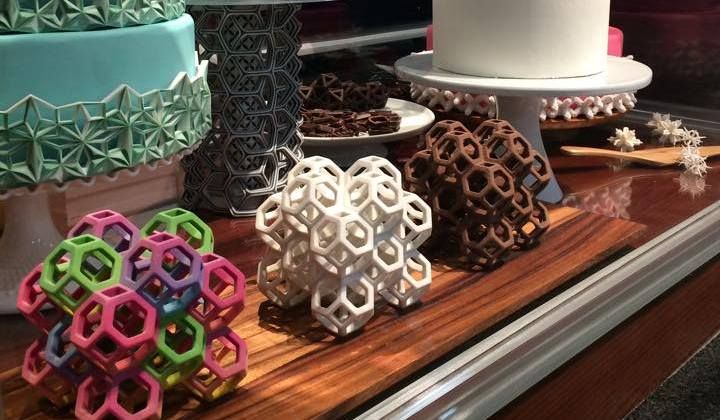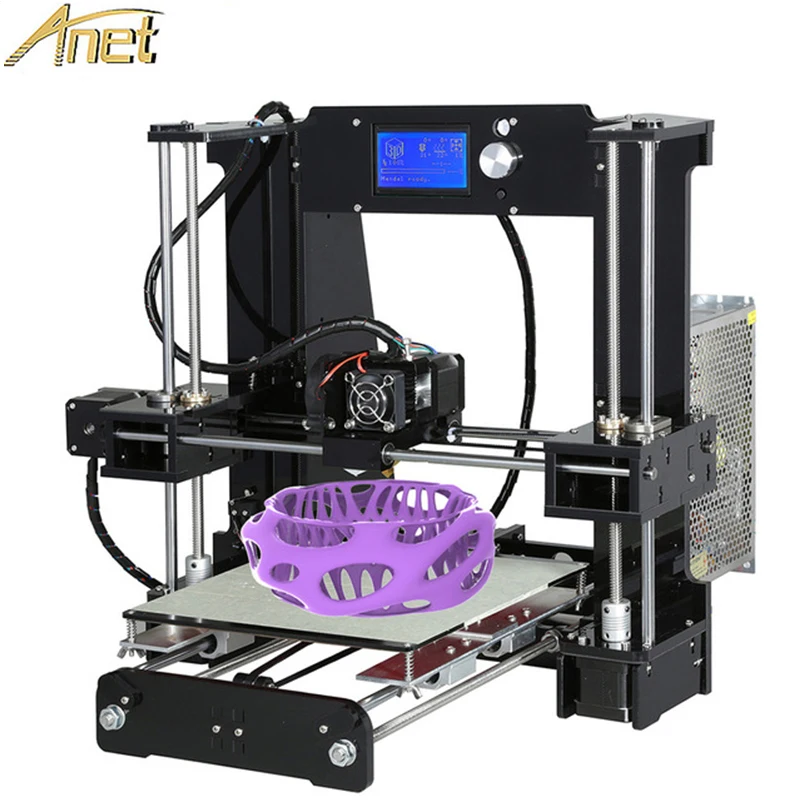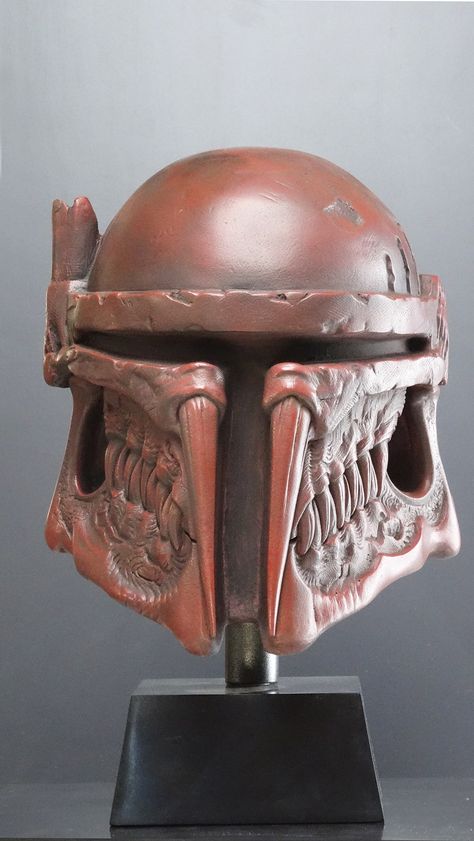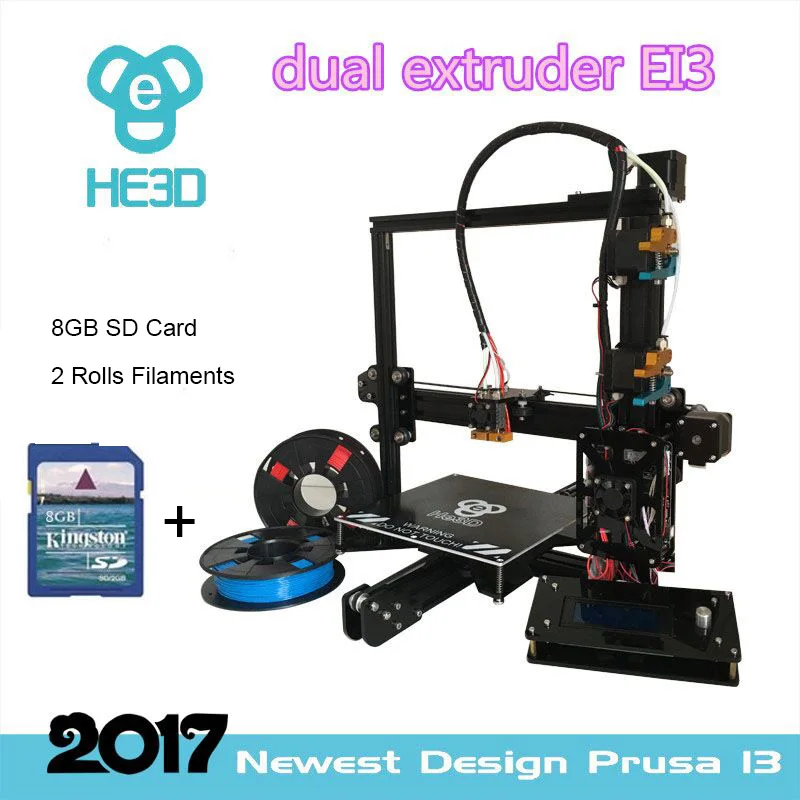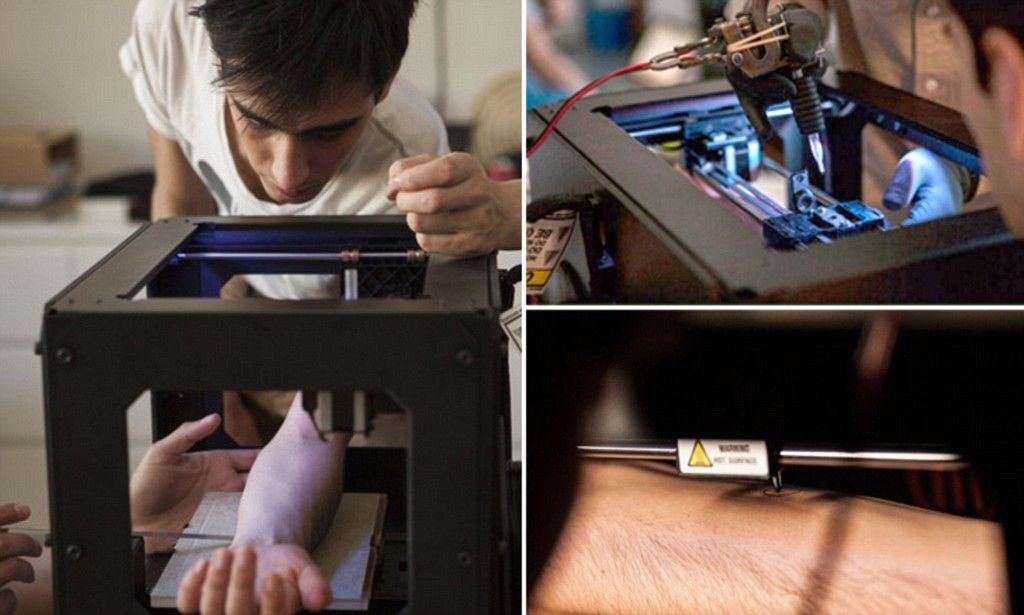What is the largest 3d printer
Largest 3D printers in 2022 for XXL prints
Large-scale 3D printers are able to print massive objects thanks to their gigantic build volumes. This guide covers some of the largest 3D printers in the world that are commercially available.
Last update January 30, 2023
We removed discontinued products and updated the BLB Industries The BOX lineup, which has been replaced by The Industry MAGNUM. We also added MASSIVit's latest solution, the Massivit 10000.
Table of contents
Handpicked related content
Large scale 3D printers (XXL): 2023 selection
BIG-Meter V4
F1000
BigRep ONE v4
400 Series WORKBENCH XTREME
T3500
MAGNUM
Massivit 10000
MAMA
3D printing furniture
3D printing large prototypes
3D printing production series
Customized large scale 3D printers
What are the best large scale 3D printers?
Large-scale 3D printers have been in the spotlight for quite some time. When we say large scale, we mean it– these machines can 3D print objects of over 1 square meter. They can be used to 3D print pieces of furniture, large prototypes, or several series of smaller objects in one go.
The professional 3D printers featured in our article are basically super-sized versions of ordinary desktop 3D printers. They almost all use extrusion 3D printing technology (FFF) and work the same way as regular desktop printers.
Our “largest 3D printers” selection does not include construction 3D printers, which fit into a different category.
Handpicked related content
If these large scale 3D printers (XXL) are too big, check out our other selections:
- Large format 3D printers (XL)
- Large volume 3D printers (L) for desktops/benchtops
- Large resin 3D printers (L)
Large scale 3D printers (XXL): 2023 selection
| Brand | Product | Build size | Country | Price Approximate starting prices based on supplier-provided information and public data. | |
|---|---|---|---|---|---|
| Modix | BIG-Meter V4 | 1010 × 1010 × 1010 mm39.76 × 39.76 × 39.76 in | Israel | $ 13,50013 723 €11,975 £2,012,256 ¥ | Buy |
| CreatBot | F1000 | 1000 × 1000 × 1000 mm39.37 × 39.37 × 39.37 in | China | $ 29,99930 494 €26,610 £4,471,531 ¥ | Buy |
| BigRep | BigRep ONE v4 | 1005 × 1005 × 1005 mm39.57 × 39.57 × 39.57 in | Germany | $ 30,00030 000 €26,611 £4,471,680 ¥ | Quote |
| 3D Platform | 400 Series WORKBENCH XTREME | 1000 × 1500 × 700 mm39.37 × 59.06 × 27.56 in | United States | $ 49,99950 823 €44,351 £7,452,651 ¥ | Quote |
| Tractus3D | T3500 | ⌀ 1000 x 2100 mm | Netherlands | $ 59,00049 900 €52,335 £8,794,304 ¥ | Quote |
| The Industry | MAGNUM | 1500 × 1200 × 1200 mm59. 06 × 47.24 × 47.24 in 06 × 47.24 × 47.24 in | Sweden | $ 135,000129 990 €119,750 £20,122,560 ¥ | Quote |
| MASSIVit 3D | Massivit 10000 | 1420 × 1110 × 1500 mm55.91 × 43.7 × 59.06 in | Israel | upon request | Quote |
| Modix | MAMA | 2000 × 5000 × 1000 mm78.74 × 196.85 × 39.37 in | Israel | upon request | Quote |
Expand to see more specs
The products in the table are ranked by price (low to high).
| Brand | Product | Build size | Build volume | Country | Price Approximate starting prices based on supplier-provided information and public data. Prices may vary by region, over time and do not include additional products or services (taxes, shipping, accessories, training, installation, …). | |
|---|---|---|---|---|---|---|
| Modix | BIG-Meter V4 | 1010 × 1010 × 1010 mm39.76 × 39.76 × 39.76 in | 1030.3 L | Israel | $ 13,50013 723 €11,975 £2,012,256 ¥ | Buy on Modix |
| CreatBot | F1000 | 1000 × 1000 × 1000 mm39. 37 × 39.37 × 39.37 in 37 × 39.37 × 39.37 in | 1000 L | China | $ 29,99930 494 €26,610 £4,471,531 ¥ | Buy on CreatBot |
| BigRep | BigRep ONE v4 | 1005 × 1005 × 1005 mm39.57 × 39.57 × 39.57 in | 1015.08 L | Germany | $ 30,00030 000 €26,611 £4,471,680 ¥ | Get a quote |
| 3D Platform | 400 Series WORKBENCH XTREME | 1000 × 1500 × 700 mm39.37 × 59.06 × 27.56 in | 1050 L | United States | $ 49,99950 823 €44,351 £7,452,651 ¥ | Get a quote |
| Tractus3D | T3500 | ⌀ 1000 x 2100 mm | 1649.34 L | Netherlands | $ 59,00049 900 €52,335 £8,794,304 ¥ | Get a quote |
| The Industry | MAGNUM | 1500 × 1200 × 1200 mm59.06 × 47.24 × 47.24 in | 2160 L | Sweden | $ 135,000129 990 €119,750 £20,122,560 ¥ | Get a quote |
| MASSIVit 3D | Massivit 10000 | 1420 × 1110 × 1500 mm55.91 × 43.7 × 59.06 in | 2364.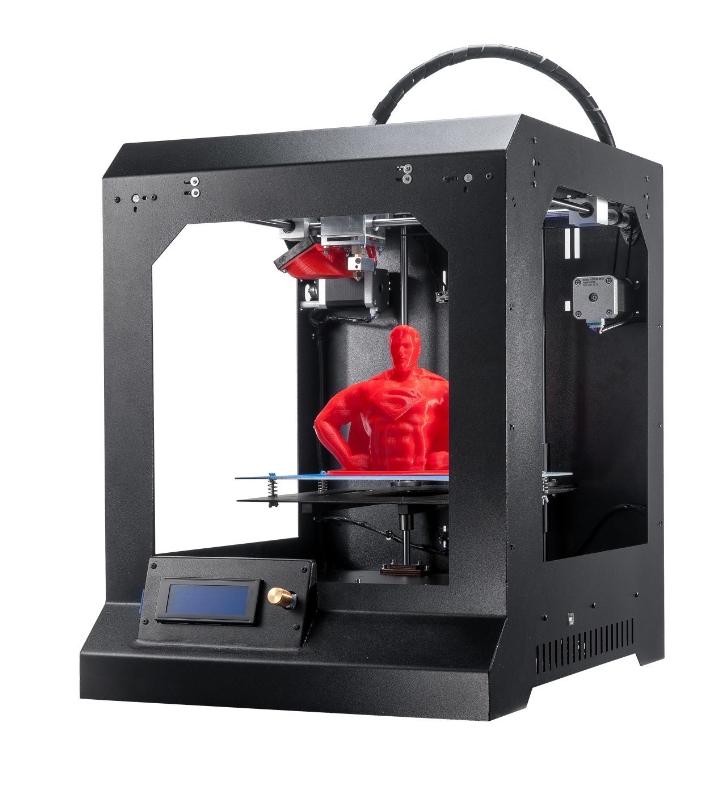 3 L 3 L | Israel | upon request | Get a quote |
| Modix | MAMA | 2000 × 5000 × 1000 mm78.74 × 196.85 × 39.37 in | – | Israel | upon request | Get a quote |
Overview of the best large scale professional 3D printers
The Modix BIG-Meter offers over one cubic meter of build volume. As all Modix printers do, the BIG-Meter is delivered as a self-assembly kit, which contributes to the printer’s relatively low price point.
This large scale 3D printer comes with a dual extruder (E3D Aero and E3D Volcano print heads), full automatic bed leveling (bed tile and bed mapping), a Wi-Fi controller, and a range of industrial-grade components. The print bed heats up to 120°C.
Buy on Modix Get a quote Add to comparison
The F1000 from CreatBot offers a full cubic meter of fully enclosed and heated (60°C) build volume. There’s also a filament chamber that can hold two spools of up to 5kg each and heat up to 45°C or 65°C.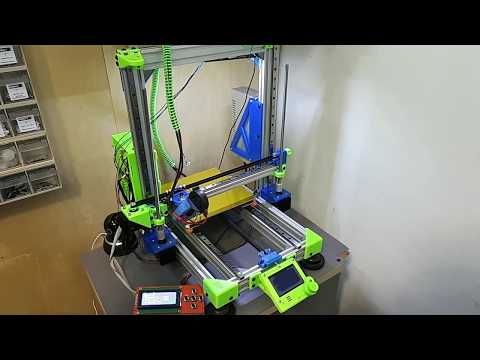
Its dual nozzles are able to heat up to 420°C, while the print bed heats up to 100°C. Compatible materials range from standard PLA and ABS to PETG and carbon fiber-filled and flexible materials.
Buy on CreatBot Get a quote Add to comparison
The BigRep ONE, currently in its third generation of upgrades and updates, is one of the only large-sized 3D printers to provide independent dual extrusion (IDEX). IDEX can cut production times in half thanks to duplication or mirror modes.
The printer’s large touchscreen grants access to the webcam and allows users to resume prints even after a power outage. The filament holder is able to hold multiple spools of up to 8kg.
Contact manufacturer Get a quote Add to comparison
This large format 3D printer with dual extrusion is customizable. Various extruders are available, and it’s possible to add an enclosure. The enclosure can be heated and/or include an air filter as well.
It’s possible to choose from two different control systems; with Wi-Fi or with Ethernet connectivity. The automatic leveling probe touches over 400 points on the print bed to ensure optimal calibration.
The automatic leveling probe touches over 400 points on the print bed to ensure optimal calibration.
Contact manufacturer Get a quote Add to comparison
The T3500, a huge delta 3D printer, offers a massive build size that can 3D print to an exact scale of 1:1 up to 2.1 meters high.
The large-scale Tractus3D T3500 can 3D print exotic materials with its hot-end extruder capable of reaching up to 300°C. This 3D printer features a heated bed and can be equipped with an optional dual extruder.
Contact manufacturer Get a quote Add to comparison
The Industry MAGNUM is a very large format 3D printer by The Industry (previously called BLB Industries), a manufacturer based in Sweden. This XXL 3D printer offers a build volume of 2.16m³ and comes with a set of nozzles ranging from 2 to 8mm in diameter. The MAGNUM is based on the company’s previous model, the BLB Industries THE BOX.
Contact manufacturer Get a quote Add to comparison
The Massivit 10000 is an industrial large format 3D printer produced by MASSIVit 3D. MASSIVit 3D is a 3D printer manufacturer based in Israel. This 3D printer offers a build volume of 1420 x 1110 x 1500 mm.
MASSIVit 3D is a 3D printer manufacturer based in Israel. This 3D printer offers a build volume of 1420 x 1110 x 1500 mm.
Contact manufacturer Get a quote Add to comparison
Modix has nicknamed their printer “Personal Car Factory”, a quick way to indicate how big the MAMA (Modular Additive Manufacturing Assembler) system really is. It’s equipped with a high-speed pellet extruder, and is also capable of 3D printing with spools of filament.
This huge FFF 3D printer isn’t available yet.
Contact manufacturer Get a quote Add to comparison
Applications for large scale 3D printing
3D printing furniture
The largest 3D printers can be used to 3D print furniture in one go. This includes tables, chairs, and even bathtubs. 3D printing furniture can also generate unique, complex pieces that would be difficult to create otherwise.
Hence, customized furniture is becoming more and more accessible thanks to extra-large 3D printers.
3D printing large prototypes
The professional large-scale 3D printers featured in our article can also be used to 3D print large prototypes. This enables businesses to test out their products before actually launching production. Industrial designers and engineers are able to perform more revisions in significantly less time.
They can test their future products extensively while at the same time reducing the production-to-market time.
3D printing production series
Large-scale 3D printers don’t have to exclusively 3D print large objects and prototypes. Their huge build platform also enables 3D printing big series of smaller objects.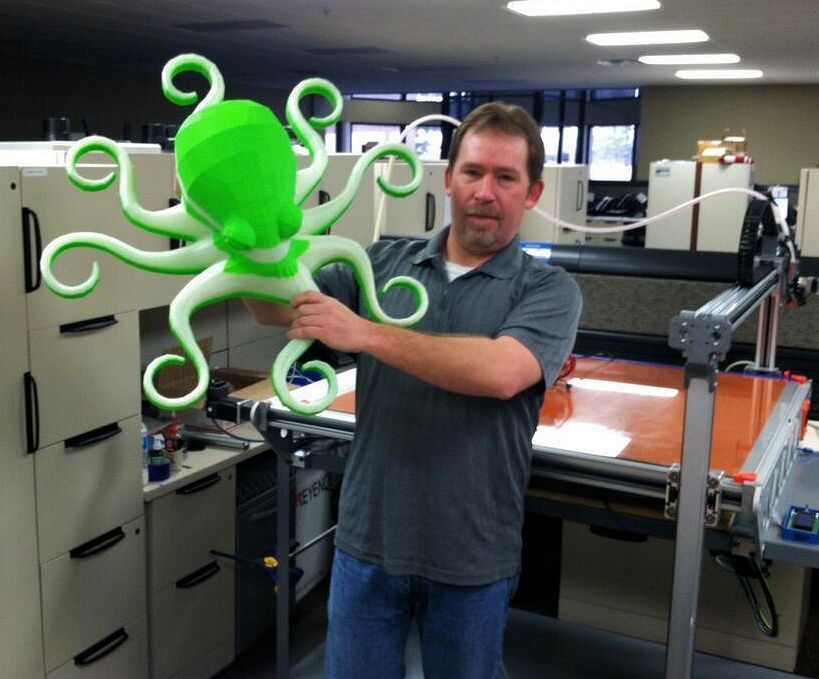
Customized large scale 3D printers
There are several manufacturers that mainly offer tailored solutions rather than standardized 3D printer models. Tobeca, for instance, is a French team that builds 3D printers from scratch and is based entirely on their customers’ needs and requirements.
US-based Erectorbot also provides on-demand builds, although they do have a lineup of standard models. Then there’s Colossus, a company in Belgium that constructs 3D printers within shipping container-like structures. CNC Barcenas, a Spanish manufacturer, also offers tailored, large-scale 3D printers with a range of options to choose from.
THE TOP 10 LARGEST 3D PRINTERS
0Shares
Recently, Mike broke the news about Branch Technology’s C-Fab project for the future of architecture. While that is primarily based on a Kuka arm device, I started to think about some of the other large-sized 3D printing projects in the making and, more specifically, about the 3D printers behind them. While most people generally associate 3D printing with small size objects, the truth seems to be quite different. In fact, there seem to be two diametrically different concurrent trends in the industry. One is towards printing with the finest resolutions and the other is aimed at printing the largest sizes possible.
While most people generally associate 3D printing with small size objects, the truth seems to be quite different. In fact, there seem to be two diametrically different concurrent trends in the industry. One is towards printing with the finest resolutions and the other is aimed at printing the largest sizes possible.
While they are fewer, numerically, the large size 3D printers seem to draw more interest. So, I figured that, to continue our Top Ten series, we should go find out exactly which are the ten largest 3D printers in the world. This time it is a “real” top ten as I counted close to 20 3D printers with build sizes of around 1 cubic meter and above. It is also based on an objective criteria: build size capability. The only high profile project missing from our list is Dr. Behrokh Khoshnevis’s Contour Crafting, pictured above, as it proposes a process more than a specific 3D printer.
So, if you are thinking of starting that new 3D printed boat project (like my friends here in Sicily at LivreaYacht), or concrete doghouse and furniture (like my new friends at ConcretePrinter), these are some of the machines you might want to look at and confront with.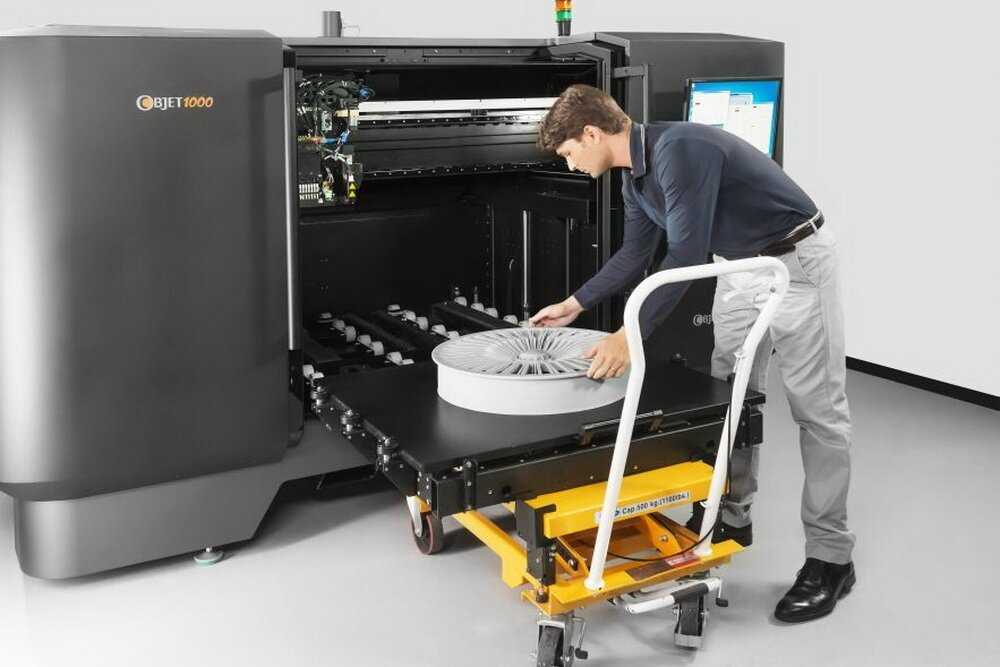
2.6 – 3.1 cubic meters / 94 – 112 cubic feet (available for service)
Norway’s Norsk Titanium (NTi) is currently in the process of opening a metal 3D printing facility in the United States, which will feature the company’s Direct Metal Deposition technology. DMD relies on a plasma arc to weld titanium wire directly onto a substrate until it reaches near-net-shape and NTi’s system is capable of 3D printing parts up to 120 x 120 x 180 cm in size, though the maximum length possible they say is 215 cm (that’s 4′ x 4′ x 5.9′ or 7′).
3.696 cubic meters (3,696 Liters) / 130.52 cubic feet (available for purchase)
The Exerial will have a double chamber working volume which will measure 3.168 liters, making it one of the biggest 3D printers in the world. ExOne uses its own binder jetting technology to work primarily with metals, ceramics and sand, which is used exclusively for serial production of sand cores and molds. On top of its size, the Exerial system is 3-4 times the speed of the next largest machine from ExOne, the S-Max.
4 x 2 x 1 m: 8 cubic meters / 282 cubic feet (available for purchase)
The largest industrial machine currently on the market is voxeljet’s VX4000, which uses the company’s binder jetting technology primarily to 3D print sand casts as large as 4 x 2 x 1 meters (a volume of 8 cubic meters),
9 cubic meters / 317 cubic feet (available for projects/studies/research)
Designed by Enrico and Riccardo Dini, this 3D printer uses a binder jetting process. It deposits layers of a particular artificial sandstone and then creates the construction layer by applying a binder. Compared to other cement 3D printers it offers even greater geometrical freedom.
112 cubic meters / 368 cubic feet (available for purchase)
Sciaky’s largest available system is the EBAM 300, which uses a high power electron beam gun to melt a 3 mm thick titanium filament to near net shape, with standard deposition rates ranging from 7 to 20 lbs. per hour.
14 cubic meters / 494 cubic feet (available for service)
The KamerMaker was one of the very first large-scale 3D printers to make headlines. It was also the first to use RepRap FFF-type technology to build a house on the canal in Amsterdam. DUS Architects and Fiction Factory, the companies behind it, have just added a second KamerMaker – with twice the original print volume – to speed up construction. The first KamerMaker was already printing at 240 mm/s.
It was also the first to use RepRap FFF-type technology to build a house on the canal in Amsterdam. DUS Architects and Fiction Factory, the companies behind it, have just added a second KamerMaker – with twice the original print volume – to speed up construction. The first KamerMaker was already printing at 240 mm/s.
Cylindrical, 8-10 meters / 26-32 ft tall (in development)
Ever since it started making 3D printers, WASP’s founder Massimo Moretti has had the dream of creating a house 3D printer which can construct habitats using soil and minimum energy on location. To do this, the company has built progressively larger delta 3D printers with special extruders. When it will be completed, the GigaDelta model will be 12 meters tall.
25 cubic meters / 930 cubic feet (available for service)
You may recognize the the BAAM (Big Area Additive Manufacturing) machine from Cincinnati Incorporated for its use in 3D printing cars. The BAAM printer was designed specifically to 3D print the Strati car for Local Motors, with help and technology licensed from Oak Ridge National Laboratory. The size and speed allow large parts to be made quickly using thermoplastic materials, which makes the process particularly low-cost. It also has open architecture for material vendors, which means that it can offer more alternatives. And BAAM is in the process of getting even bigger, as Cincinnati works on their next version, nicknamed Bertha.
The size and speed allow large parts to be made quickly using thermoplastic materials, which makes the process particularly low-cost. It also has open architecture for material vendors, which means that it can offer more alternatives. And BAAM is in the process of getting even bigger, as Cincinnati works on their next version, nicknamed Bertha.
288 cubic meters / 10,170 cubic feet (available for purchase on demand)
Slovenian company BetAbram produces, upon request, a series of three house printers that can 3D print habitable structures from a CAD file. The machines can print layers of 25 cm, but are working up to even thicker layers for added speed. Prices start at just €12,000 for the basic P3 model. The company is working on 3D printing a two-story house at some point this summer.
2,466 cubic meters / 87,120 cubic feet (available for service)
When discussing large-sized 3D printers, the largest one by far is that created by Winsun, in China, to build furniture, houses, and even five stories buildings. It uses recycled concrete from construction waste and the process is, thus, significantly more eco-sustainable than traditional construction. Here, it is definitely worth noting that there is some controversy about the company’s technology as it relates to Dr. Khoshnevis’s own technology, with the USC professor claiming IP theft.
It uses recycled concrete from construction waste and the process is, thus, significantly more eco-sustainable than traditional construction. Here, it is definitely worth noting that there is some controversy about the company’s technology as it relates to Dr. Khoshnevis’s own technology, with the USC professor claiming IP theft.
Correction: This post previously misrepresented the specs of the Exerial 3D printing system from ExOne to be slightly smaller, as well as the availability of the machine. The article has since been updated to more accurately reflect ExOne’s largest machine, now available for purchase.
Davide Sher
Davide was born in Milan, Italy and moved to New York at age 14, which is where he received his education, all the way to a BA. He moved back to Italy at 26 and began working as an editor for a trade magazine in the videogame industry. As the market shifted toward new business models Davide started working for YouTech, the first iPad native technology magazine in Italy, where he discovered the world of additive manufacturing and became extremely fascinated by its incredible potential. Davide has since started to work as a freelance journalist and collaborate with many of Italy’s main generalist publications such as Corriere della Sera, Panorama, Focus Italy and Wired Italy: many of his articles have revolved around the different applications of 3D printing.
Davide has since started to work as a freelance journalist and collaborate with many of Italy’s main generalist publications such as Corriere della Sera, Panorama, Focus Italy and Wired Italy: many of his articles have revolved around the different applications of 3D printing.
USA builds largest metal 3D printer
News
Subscribe author
Subscribe
Don't want
2
Ingersoll, MELD Manufacturing and Siemens will build the largest metal 3D printer. The system will rely on adapted friction welding technology and will be able to grow parts up to ten meters long.
The work is carried out in the interests of the US military: such 3D printers are planned to be used primarily in the production of mine protection for army vehicles. During the Vietnam War, 73 percent of equipment losses were due to explosions on anti-personnel and anti-tank mines. Modern armored vehicles and armored personnel carriers are designed with enhanced protection, and an important role is played by thick, armored bottoms, often V-shaped and with a minimum of welds.
An American Cougar armored vehicle that hit a mine in Iraq in 2006 and drove another three kilometers to the safe zone. The personnel escaped with minor injuries. Photo: Marine Sergeant Christopher Clare
Previous work on the Jointless Hull project of the Army ManTech research program has looked at forging, forming and welding at high current density to reduce weld porosity. The results were rated as satisfactory in terms of strength, but at the same time, there was a lack of geometric freedom and manufacturing flexibility.
As a result, they decided to abandon forging, forming and welding in favor of another technology - production by the method of additive friction deposition with mixing (Additive Friction Stir Deposition, AFSD), that is, Friction Stir Welding, adapted for 3D printing, FSW).
Development work consists of two stages. Not the first one is planned to assemble a demonstrator with a construction area measuring 1x1x1 meter to test the technology and software.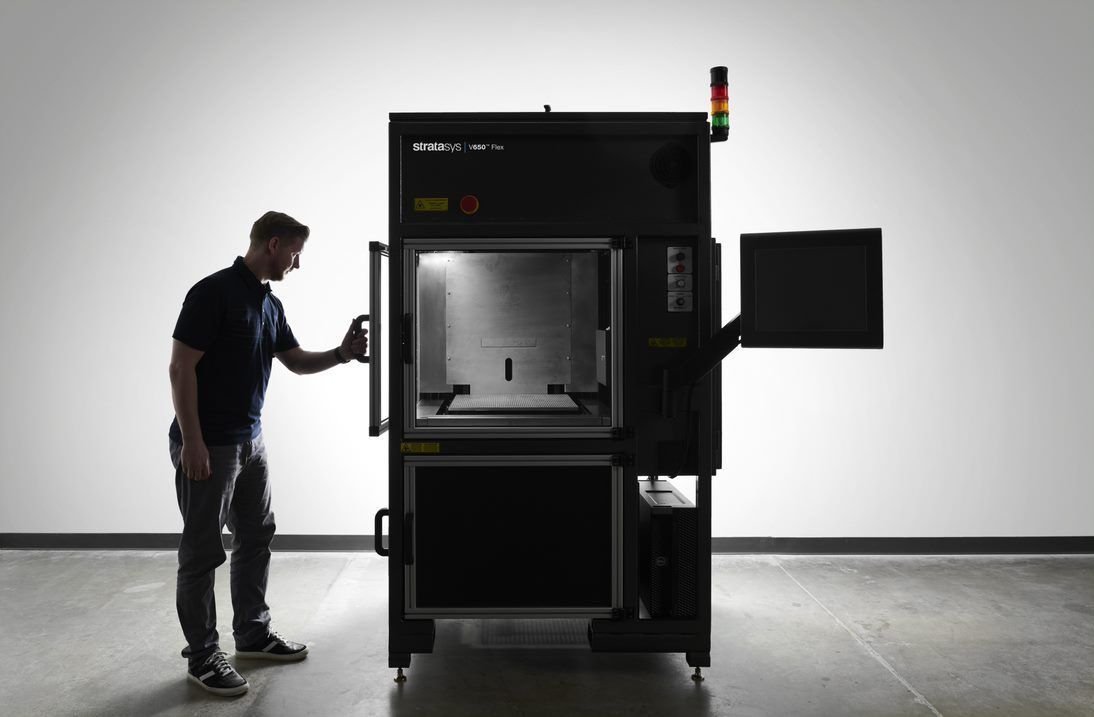 The design must then be scaled up to a working volume of 10x6.5x4 meters - the largest among "metal" 3D printers. Length is a conditional characteristic, since the portal structure will move along the rails. Siemens is responsible for the control systems and software.
The design must then be scaled up to a working volume of 10x6.5x4 meters - the largest among "metal" 3D printers. Length is a conditional characteristic, since the portal structure will move along the rails. Siemens is responsible for the control systems and software.
The large-format version is already being assembled by Ingersoll, which has considerable experience in working on large additive systems. In 2019, this venture helped the University of Maine set three Guinness records at once: to make the largest 3D printed boat (seven meters in length), aka the largest one-piece 3D printed object, on the largest 3D printer for working with polymers and polymer composites. The same system is used in the production of large molding tooling, for example for the manufacture of helicopter blades.
The new 3D printer, as already mentioned, will deposit metals using friction stir deposition. This technology is being developed by MELD Manufacturing using the Edison Welding Institute (EWI).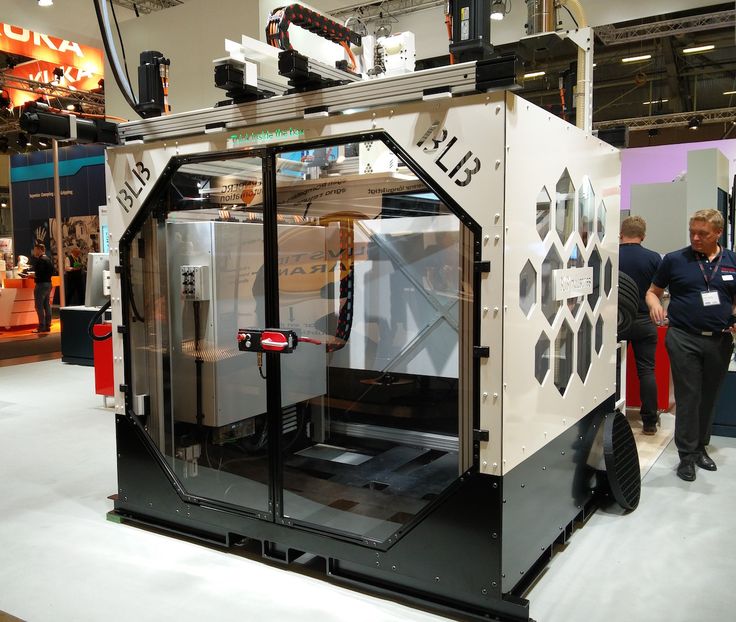 The build-up is carried out by plastic deformation at temperatures below the melting threshold, thereby achieving high isotropy and density without shrinkage and the risk of hot cracks, without the need for a vacuum chamber or protective gas environment. The technology also allows you to create gradient structures from different metals or alloys. Consumables are usually rounded bars with the possibility of using powders of different fractions and even metal shavings.
The build-up is carried out by plastic deformation at temperatures below the melting threshold, thereby achieving high isotropy and density without shrinkage and the risk of hot cracks, without the need for a vacuum chamber or protective gas environment. The technology also allows you to create gradient structures from different metals or alloys. Consumables are usually rounded bars with the possibility of using powders of different fractions and even metal shavings.
MELD Manufacturing already offers several models of additive systems. The latest commercial offer is the L3 3D printer released in 2020 with a working area of 1143x584x584 mm, although the K2 system with a useful volume of 2100x1100x1000 mm is the leader in terms of dimensions. The equipment allows you to work with various steel grades, as well as aluminum, copper, titanium, magnesium and nickel alloys. As a rule, such 3D printers stack layers about one millimeter thick and 38 mm wide, keeping the temperature of the material at 60-90% of melting point. Since the resolution of 3D printing is low, the resulting blanks require intensive machining, but with much less labor and waste than milling from blanks, and with high scalability, which is planned to be demonstrated in practice by the joint efforts of Ingersoll, MELD Manufacturing and Siemens. The commissioning of the large-format system is scheduled for the fourth quarter of this year.
Since the resolution of 3D printing is low, the resulting blanks require intensive machining, but with much less labor and waste than milling from blanks, and with high scalability, which is planned to be demonstrated in practice by the joint efforts of Ingersoll, MELD Manufacturing and Siemens. The commissioning of the large-format system is scheduled for the fourth quarter of this year.
Siemens MELD Ingersoll rotary welding
Subscribe to the author
Subscribe
Don't want
2
The world's largest 3D printer has printed a boat
Now you don't have to bother with gifts for men. It will be enough to order a boat that a 3D printer can print.
It will be enough to order a boat that a 3D printer can print.
The world's largest 3D printer is located at the University of Maine in the USA. In 72 hours, the polymer device printed a boat over 7 meters long and weighing 2.26 tons. Thus, the printing process immediately broke 3 world records, which were successfully recorded by representatives of the Guinness Book of Records:
1. The largest prototype polymer 3D printer;
2. Largest 3D printed solid object;
3. The largest 3D printed boat.
But at this point, the employees of the Center of Excellence and composites stop at going. They claim that this 3D printer can print and more global objects, up to 30 m long, 7 m wide and 3 m high. Performance super 3D printer is 226 kg of polymers per hour.
See also: Transformer bed that will solve the problem of dividing the territory
pleasure. To create the entire installation and put it into operation, spent about $2. 5 million. The bulk of the money was allocated by the US Army. Later on she plans to work closely with the company to create mobile shelters for soldiers, as well as bridges. Thus, the army will become one of main customers. The company received financial support in the amount of $500,000 from the Maine Institute of Technology.
5 million. The bulk of the money was allocated by the US Army. Later on she plans to work closely with the company to create mobile shelters for soldiers, as well as bridges. Thus, the army will become one of main customers. The company received financial support in the amount of $500,000 from the Maine Institute of Technology.
The aim of this project was the idea of using 3D printing in shipbuilding. The printed boat was named "3Dirigo" and have already tried it in the pool. Soon the ship will set sail. It is worth noting that about $40 thousand was spent on its printing.
US Senator Angus King noted that the printing of the 3Dirigo polymer boat was truly a great event in the field of technology, because it opens up many new opportunities. In addition, Angus joked that the first great event for the university was admission at 1965 year of the famous writer Stephen King.
And we recall that in April 2019 in Israel for the first time it was possible to print a living heart on a 3D printer.


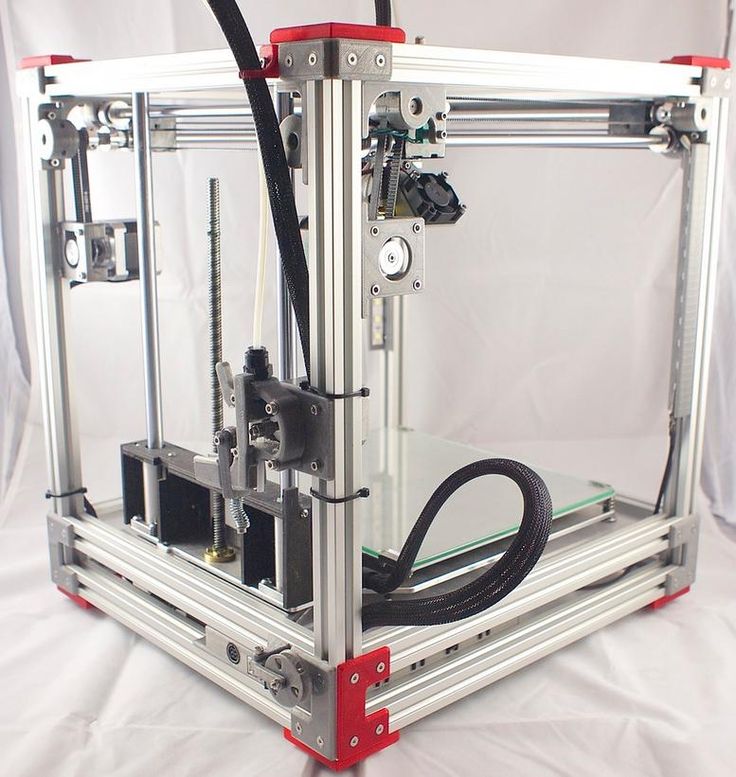 Prices may vary by region, over time and do not include additional products or services (taxes, shipping, accessories, training, installation, …).
Prices may vary by region, over time and do not include additional products or services (taxes, shipping, accessories, training, installation, …).